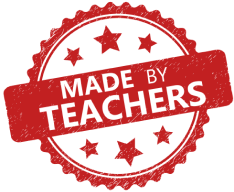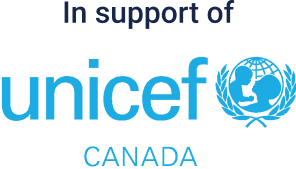Quebec Secondary I (Grade 7)

CLICK HERE FOR CURRICULUM CONNECTIONS, LESSONS AND SUPPORT RESOURCES.
Made by a Secondary I teacher in Quebec.
Kids Boost Immunity (KBI) provides educational content (lessons and support materials) developed by teachers and where needed, health experts, that is directly linked to curriculum and is available completely for free. Each lesson is paired with an online quiz that students can take on a laptop, tablet, or phone. Every time a student scores 80% or higher on a quiz, we donate life-saving vaccines to UNICEF Canada. To learn more about KBI, click here.
Click on the overarching curriculum themes below to see the curriculum outcomes that match KBI educational content. The full Secondary I Quebec Curriculum Connections document is here.
- Science and Technology
-
Curricular outcomes:
Science – The Living World (General Concept)
- Survival of Species
- Among other adaptive strategies, reproduction ensures the survival of species. The study of the reproductive function of different species reveals a wide range of original and effective solutions.
- For humanity as a whole, sexuality is not limited to reproduction, and birth control seems to be a matter of collective survival. Most everywhere on Earth, different birth control methods are available to those who wish to use them.
- Life-sustaining processes
- The cell is regarded as the basic structural and functional unit of life. Despite the astonishing variety of cellular forms, cells ensure similar vital functions. The vital functions are essential for sustaining life.
Science and Technology – Curriculum Competency
- Seeks answers or solutions to scientific or technological problems
- Problem Definition: Identify and define the problem, recognizing relevant elements and formulating it clearly.
- Scenario Selection: Evaluate different scenarios, considering constraints, and choose the best one to achieve the goal, justifying the choice and planning the procedure.
- Execution: Follow the plan, adjusting as necessary, and note any observations that help in problem analysis.
- Analysis and Conclusion: Analyze the results or solution, identify trends, evaluate the procedure, suggest improvements, and draw conclusions.
- Makes the most of his/her knowledge of science and technology
- Impact of Science and Technology: Study the long-term effects of science and technology on individuals, society, the environment, and the economy, placing them in a social and historical context, and identifying ethical issues.
- Understanding Technical Objects: Show curiosity about technical objects, examine how they work, analyze their components, create schematic diagrams, and understand their systems and subsystems.
- Understanding Natural Phenomena: Ask questions about the environment, examine and describe natural phenomena, use laws or models to explain them, and ensure coherence in these explanations, while recognizing that relevant concepts can evolve.
- Communicates in the languages used in science and technology
- Exchanging Information: Participate in the exchange of scientific and technological information by understanding the importance of sharing, being open to other viewpoints, and validating one’s own data and procedures by comparing them with others.
- Communicating Knowledge: Share scientific or technological knowledge by considering the target audience, using various methods of presentation, and adapting the message to the medium used.
- Interpreting and Producing Messages: Use and evaluate scientific and technological information from credible sources, ensuring relevance, and present the information following the rules and conventions of science, technology, and mathematics.
Science – The Earth and Space (General Concept)
- General characteristics of the Earth
- Planet Earth is not a homogeneous and monolithic entity. In fact, its structure can be analyzed and studied. The composition and structure of the Earth vary considerably from its centre to the highest reaches of its atmosphere. The study of its surface also reveals significant differences. All these specific features inevitably affect the beings that live in the biosphere.
- By observing, analyzing and modelling our planet, we have been able to determine our responsibility with regard to some of the changes we have observed. The study of these changes should now convince us that we must work together to make sure we have a healthy plant.
Science and Technology – The Living World (General Concept)
- Diversity of life forms
- The study of millions of living beings across diverse habitats reveals a variety of adaptive strategies, showcasing the wonders of evolution. Over time, evolution and natural selection have led to changes in species, with favorable traits being passed down through generations. These observations of species' differences and similarities have enabled the development of a classification system.
- Survival of Species
- Reproduction is a key adaptive strategy for species survival, with various species showcasing diverse and effective reproductive methods. For humans, sexuality extends beyond reproduction, and birth control is seen as essential for collective survival, with various methods available globally.
- Life-sustaining processes
- The cell is the fundamental unit of life, performing essential functions necessary for survival. Despite the diversity in cell forms, all cells carry out similar vital functions to sustain life.
Applicable KBI lessons:
1. Scientific Curiosity and Vaccine Discoveries
- Literacy builder worksheets/answer guides
- Inquiry activities
2. Critical Thinking & Evaluating Information
- Literacy builder worksheet/answer guide
- Lesson worksheet/answers
- Video worksheet/answers
- Inquiry activities/answer guides
- Numeracy activity/answers
3. Environment & Climate Change
- Literacy builder worksheet/answer guide
- Lesson worksheet/answers
- Video worksheet/answers
- Inquiry activities/answer guides
- Numeracy activity/answers
4. Evolution and Natural Selection
- Literacy builder worksheet/answer guide
- Inquiry activities/answer guides
- Survival of Species
- English Language Arts (ELA)
-
Curricular outcomes:
ELA - Curriculum Competency
- Uses language/talk to communicate and to learn
- Producing Spoken Texts: Create spoken content for familiar audiences by considering context, audience, purpose, and language conventions, while exploring the aesthetic aspects of language.
- Interacting in Learning Contexts: Collaborate with peers and teachers to develop communication and problem-solving strategies, using inquiry in activities like research and classroom drama.
- Exploring Social Practices: Engage with the classroom and community by organizing work, developing self-evaluation and reflection processes, participating in evaluation discussions, and exploring language's role in a democratic society.
- Represents her/his literacy in different media
- Media Production: Follow a production process to create media texts for specific purposes and audiences, engaging in preproduction, production, and postproduction phases, while reflecting on strategies and personal development as a media producer and reader.
- Media Deconstruction: Analyze media texts to understand their meanings by identifying codes and conventions, recognizing that media texts are created for specific audiences and purposes, and reflecting on personal strategies for interpreting these texts.
- Producer-Text-Audience Relationship: Explore how media texts are shaped by the producer's stance, production decisions, and the representation or exclusion of different groups, while considering the impact of media texts on oneself and others.
- Reads and listens to written, spoken and media texts
- Making Sense of a Text: Integrate personal reading profile, stance, and strategies to understand a text, reading for both pleasure and learning, using prior experience and text features, and organizing information on topics of interest.
- Discussing Texts: Share personal responses to texts within a reading community, making connections between the text and personal experiences, while considering and accommodating peers' viewpoints in shaping responses.
- Interpreting Reader-Text Relationships: Reflect on how texts are constructed and their impact as a reader, using reading strategies to find textual details that support personal interpretations, blending one's world with the world of the text.
Applicable KBI lessons:
1. Critical Thinking & Evaluating Information
- Literacy builder worksheet/answer guide
- Lesson worksheet/answers
- Video worksheet/answers
- Inquiry activities/answer guides
- Numeracy activity/answers
2. Navigating the World of Online (Mis)Information
- Literacy builder worksheet/answer guide
- Inquiry activities/answer guides
- Uses language/talk to communicate and to learn
Curriculum-Related Themes Throughout the Year
- Indigenous history in Canada - precontact, contact, treaties, colonialism, The Indian Act. (September and June)
-
Curricular outcomes:
Social Sciences – General Concepts
- Native Territory
- A Native territory is occupied by citizens descended from a First Nation who claim autonomy over this territory. As a result of agreements reached between the Canadian or Québec government and some Native peoples, these territories are now subject to Native jurisdiction in almost all domains.
- Culture and Citizenship in Quebec
- Students value diversity, defend human rights, advocate for issues, and interact ethically with others. They are inclusive in their language and behaviour and recognize that everyone has something to contribute. Their approach to inclusive relationships exemplifies commitment to developing positive communities.
Applicable KBI lessons:
1. Life on Turtle Island
- Literacy builder worksheet/answer guide
- Lesson worksheet/answers
- Inquiry activities/answer guides
- Native Territory
- Reflecting on hardships and courage during WWII (November)
-
Curricular outcomes:
English Language Arts- Curriculum Competency
- Reads and listens to written, spoken and media texts
- Making Sense of a Text: Integrate personal reading profile, stance, and strategies to understand a text, reading for both pleasure and learning, using prior experience and text features, and organizing information on topics of interest.
- Discussing Texts: Share personal responses to texts within a reading community, making connections between the text and personal experiences, while considering and accommodating peers' viewpoints in shaping responses.
- Interpreting Reader-Text Relationships: Reflect on how texts are constructed and their impact as a reader, using reading strategies to find textual details that support personal interpretations, blending one's world with the world of the text.
Culture and Citizenship in Quebec
- We experience many changes in our lives that influence how we see ourselves and others.
Applicable KBI lessons:
1. Remembrance Day / Veterans Day / Armistice Day
- Reads and listens to written, spoken and media texts
- Reflecting on leadership qualities that foster kindness (December)
-
Curricular outcomes:
English Language Arts - Curriculuar Competency
- Reads and listens to written, spoken and media texts
- Making Sense of a Text: Integrate personal reading profile, stance, and strategies to understand a text, reading for both pleasure and learning, using prior experience and text features, and organizing information on topics of interest.
- Discussing Texts: Share personal responses to texts within a reading community, making connections between the text and personal experiences, while considering and accommodating peers' viewpoints in shaping responses.
- Interpreting Reader-Text Relationships: Reflect on how texts are constructed and their impact as a reader, using reading strategies to find textual details that support personal interpretations, blending one's world with the world of the text.
Culture and Citizenship in Quebec
- People who are socially aware and responsible contribute to the well-being of their social and physical environments
Applicable KBI lessons:
1. Winter Break - A Time To Reflect on Making a Difference
- Inquiry/creative activities
- Reads and listens to written, spoken and media texts
- Highlighting some key inspirational leaders during Black History Month as well as some experiences of refugees from different parts of the world (February)
-
Curricular outcomes:
English Language Arts - Curricular Competency
- Reads and listens to written, spoken and media texts
- Making Sense of a Text: Integrate personal reading profile, stance, and strategies to understand a text, reading for both pleasure and learning, using prior experience and text features, and organizing information on topics of interest.
- Discussing Texts: Share personal responses to texts within a reading community, making connections between the text and personal experiences, while considering and accommodating peers' viewpoints in shaping responses.
- Interpreting Reader-Text Relationships: Reflect on how texts are constructed and their impact as a reader, using reading strategies to find textual details that support personal interpretations, blending one's world with the world of the text.
Culture and Citizenship in Quebec
- Students value diversity, defend human rights, advocate for issues, and interact ethically with others. They are inclusive in their language and behaviour and recognize that everyone has something to contribute. Their approach to inclusive relationships exemplifies commitment to developing positive communities.
Applicable KBI lessons:
1. Black History Month
2. Refugee Experiences
- Lesson worksheet/answers
- Inquiry activities
- Reads and listens to written, spoken and media texts
- Celebrating Inspiring Women in STEM (March)
-
Curricular outcomes:
English Language Arts - Curricular Competency
- Reads and listens to written, spoken and media texts
- Making Sense of a Text: Integrate personal reading profile, stance, and strategies to understand a text, reading for both pleasure and learning, using prior experience and text features, and organizing information on topics of interest.
- Discussing Texts: Share personal responses to texts within a reading community, making connections between the text and personal experiences, while considering and accommodating peers' viewpoints in shaping responses.
- Interpreting Reader-Text Relationships: Reflect on how texts are constructed and their impact as a reader, using reading strategies to find textual details that support personal interpretations, blending one's world with the world of the text.
Science and Technology – General Concept
- The Earth and Space
- General characteristics of the Earth
- Planet Earth is not a homogeneous and monolithic entity. In fact, its structure can be analyzed and studied. The composition and structure of the Earth vary considerably from its centre to the highest reaches of its atmosphere. The study of its surface also reveals significant differences. All these specific features inevitably affect the beings that live in the biosphere.
- By observing, analyzing and modelling our planet, we have been able to determine our responsibility with regard to some of the changes we have observed. The study of these changes should now convince us that we must work together to make sure we have a healthy plant.
- Astronomical phenomena
- Although it looks virtually static at first glance, the sky is the scene of some remarkable activity. This activity is governed by Universal Gravitation between all celestial bodies, which regulates their motion and determines the structure of the solar system.
- The study of this motion and of the properties of light makes it possible to explain many phenomena that can be observed from the Earth, such as the cycles of day and night, the phases of the moon, eclipses, the seasons, and comets. The study of the solar system also makes it possible to identify certain conditions essential to the appearance and preservation of life.
- General characteristics of the Earth
Social Sciences – General Concepts
- Regional Territory
- A forest region is organized around the exploitation of a major natural resource: the forest. This organization, regardless of where the forest region is located in the world, must ensure responsible management of the resource in order to promote long-term development. It should also take into account any other activities that depend on the forest.
Culture and Citizenship in Quebec
- Students value diversity, defend human rights, advocate for issues, and interact ethically with others. They are inclusive in their language and behaviour and recognize that everyone has something to contribute. Their approach to inclusive relationships exemplifies commitment to developing positive communities.
Applicable KBI lessons:
1. International Women's Day - Celebrating Inspiring Women in STEM
- Literacy builder worksheets/answer guides
- Numeracy activity
- Inquiry activities
- Reads and listens to written, spoken and media texts
- Understanding communicable diseases and how they are spread, and learning about immunization. Suggested during flu season, immunization awareness week, and school vaccinations (if applicable)
-
Curricular outcomes:
Science and Technology – The Living World (General Concept)
- Survival of Species
- Among other adaptive strategies, reproduction ensures the survival of species. The study of the reproductive function of different species reveals a wide range of original and effective solutions.
- For humanity as a whole, sexuality is not limited to reproduction, and birth control seems to be a matter of collective survival. Most everywhere on Earth, different birth control methods are available to those who wish to use them.
- Life-sustaining processes
- The cell is regarded as the basic structural and functional unit of life. Despite the astonishing variety of cellular forms, cells ensure similar vital functions. The vital functions are essential for sustaining life.
Applicable KBI lessons:
1. Immunization Awareness Week
2. The Spread of Infectious Diseases
3. Scientific Curiosity and Vaccine Discoveries
- Literacy builder worksheets/answer guides
- Inquiry activities
- Survival of Species




